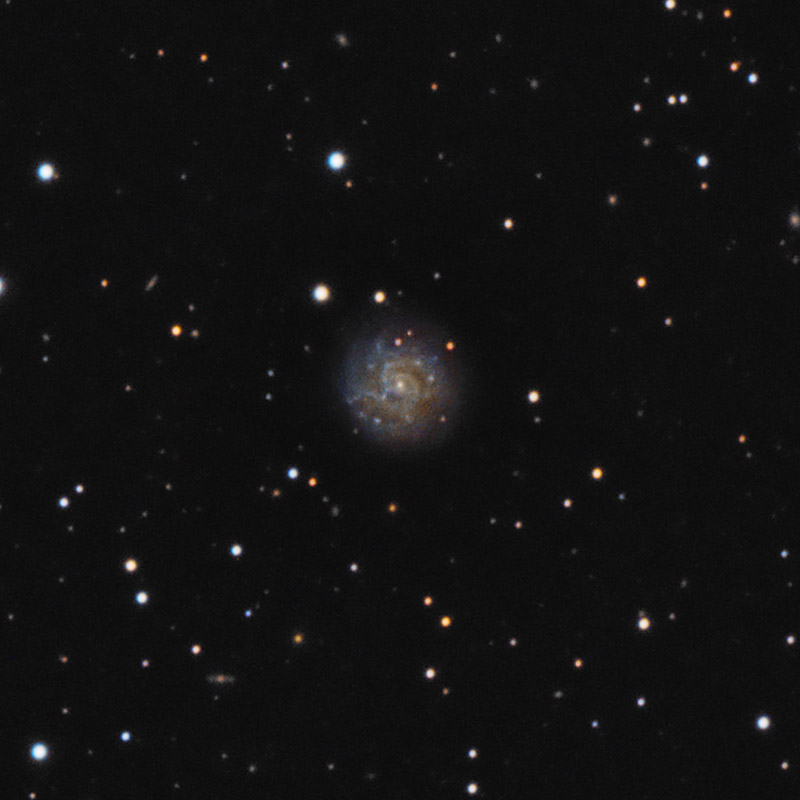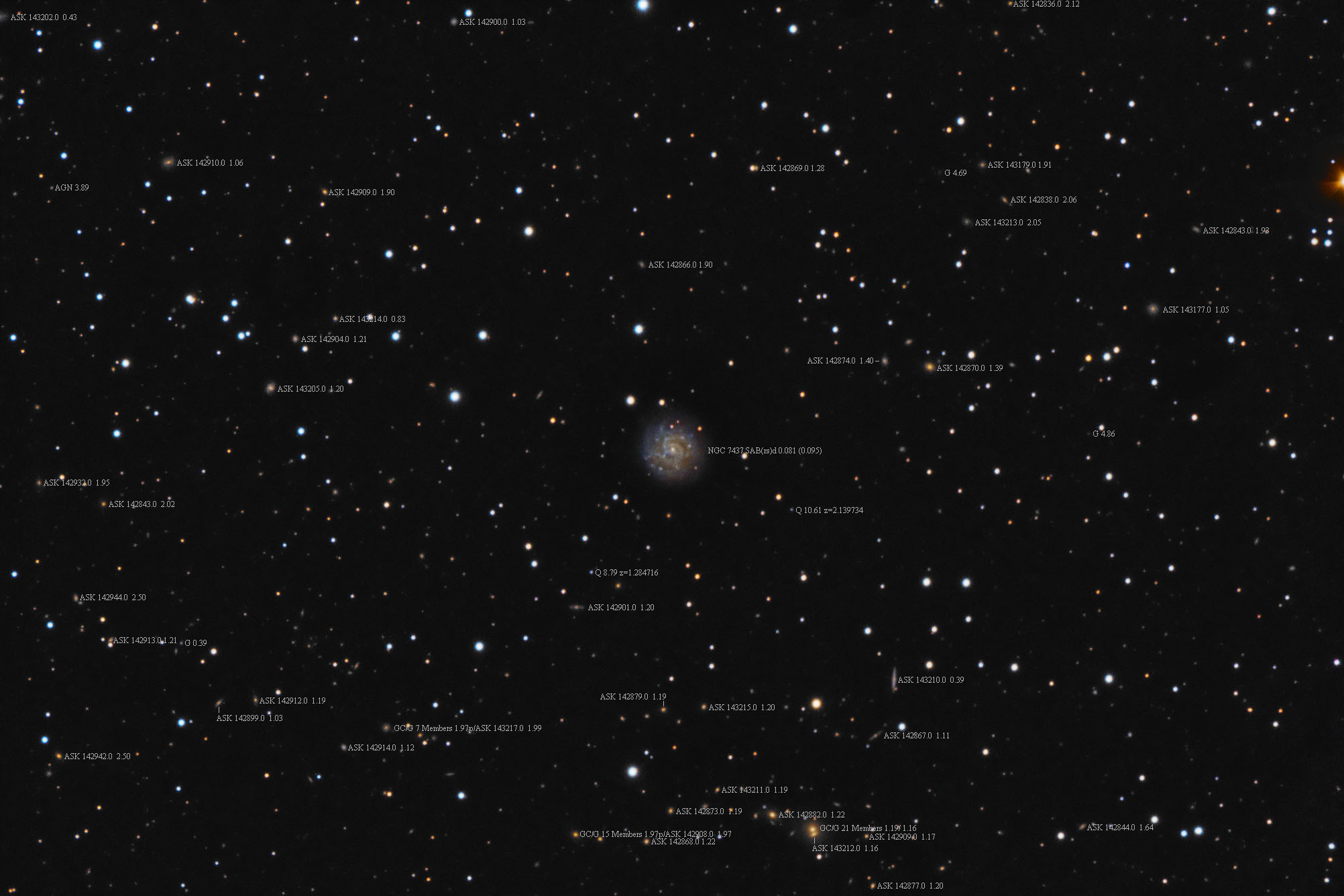Object name: NGC7437 NGC 7437 is a face on, low surface brightness ringed galaxy. Though the ring is not obvious visually it meets the requirements. It is classified as SAB(rs)d by NED and SAB(rs)c: by a paper detailing such ring galaxies. While the paper is rather deep reading and 160 pages long it does have a diagram detailing the ring structure on Page 141. http://www.aanda.org/articles/aa/pdf/2014/02/aa21633-13.pdf Not all sites even recognize the bar let alone the ring with the NGC project saying it is Sc and Seligman saying Scd?
Other than this paper I found little on this rather faint galaxy. It was discovered by Lewis Swift on October 31, 1885 and is located in Pegasus just southwest (1.8 degrees) of Markab that marks the southwest corner of the great square and start of the horse's neck. Visually it is quite faint in a 17" scope so not an easy target. It was fainter than I expected needing at least three or four times the exposure time I gave it.
There are a lot of galaxies in my annotated image at about 1.2 billion light-years. While there are several galaxy clusters in my image, including one at about that distance it has no size while these galaxies at the 1.2 billion light-year distance are seen across my image it appears there are more at that distance than the cluster can account for with a count of just 21 with much of the cluster obviously below my frame. A couple other clusters are at about 2 billion light-years but I found few individual galaxies at this distance that at about 1.2 billion light-years.
In the upper right quadrant is the spiral galaxy ASK 143213.0 at 2.05 billion light-years. It is so large I can resolve spiral arms in it at that distance. I measure its diameter at 196,000 light-years. That is one huge spiral.
Near the left edge and above center is a galaxy I've labeled as AGN at 3.89 billion light-years. NED actually lists it as a quasar but it is obviously elongated southeast to northwest and therefore not a point source as a quasar usually is.
This marks my move into December images. Though it wasn't my first December image attempt, the first night's data shows severe issues with clouds making processing them nearly impossible. Even if I did I'd have such poor results I'd have to retake them next year anyway. So I doubt I'll try and process that first night's work.
14" LX200R @ f/10, L=4x10' RGB=2x10', STL-11000XM, Paramount ME Related Designation(s):2MASS J22581006+1418314, 2MASX J22581004+1418324, 2MASXi J2258100+141832, AGES J225810+141838, AGES J225810+141841, ASK 142875.0, CGCG 2255.7+1402, CGCG 430-034, HIPASS J2258+14, IRAS F22557+1402, LCSB L0803O, MCG +02-58-041, NGC 7437, NGC7437, NSA 025137, PGC 070131, SDSS J225810.05+141830.6, SDSS J225810.06+141830.5, TBHD J225810+1418.5, UGC 12270, UZC J225810.1+141831, [HDL96] 430-010, [TMH2014] AF7448_020, [ZBS97] A10, | | 

